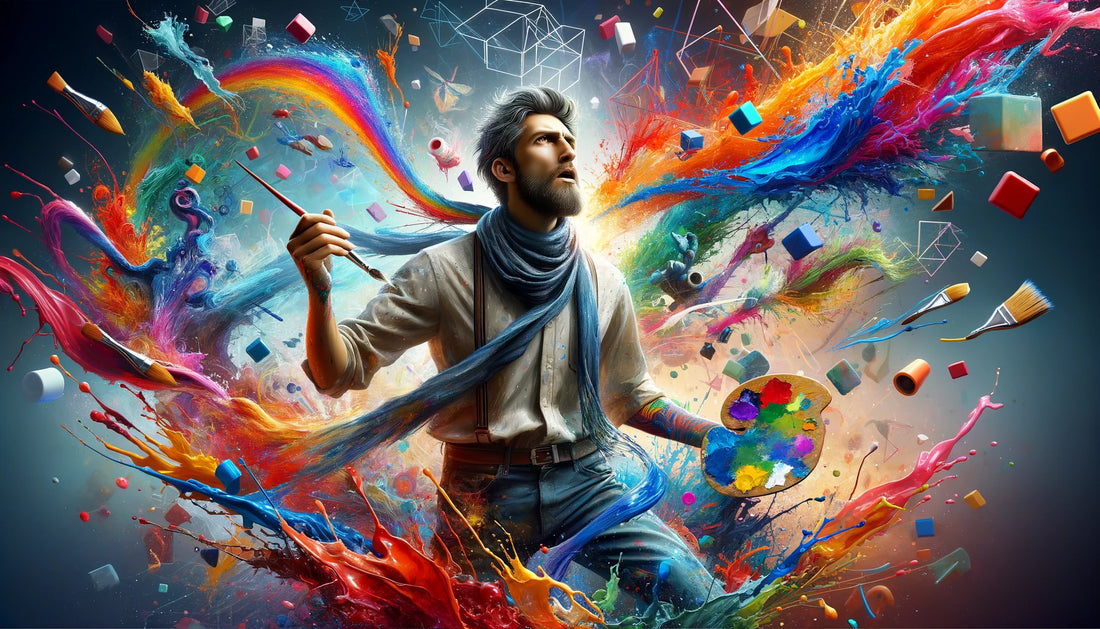Who Is Mark Rothko?
Mark Rothko, a luminary of 20th-century art, is renowned for his pioneering contributions to the abstract expressionist movement. Born Marcus Rothkowitz on September 25, 1903, in Dvinsk, Russia (now Daugavpils, Latvia), Rothko immigrated to the United States with his family at a young age, seeking refuge from anti-Semitic persecution.
Settling in Portland, Oregon, Rothko's formative years were marked by a deep appreciation for art and culture, laying the foundation for his illustrious career as one of the most influential painters of his time.
Rise to Prominence
Rothko's journey as an artist was a testament to his unwavering commitment to artistic innovation and self-expression. After studying at the Art Students League of New York and under the tutelage of the painter Max Weber, Rothko embarked on a lifelong exploration of color, form, and emotion.
His early works, influenced by surrealism and mythological themes, gradually evolved into the iconic style for which he would become renowned.

Exploring Rothko's Artistic Vision
Central to Rothko's artistic vision was his profound belief in the emotive power of color. Rejecting representational forms in favor of abstraction, Rothko sought to create immersive experiences that transcended the confines of the canvas.
His signature compositions, characterized by expansive fields of color and ethereal atmospheres, invited viewers to confront the depths of their own psyche and grapple with the complexities of the human condition.
Rothko's paintings often featured rectangular shapes hovering against a monochromatic background, creating a sense of depth and ambiguity.
Through his masterful use of color juxtaposition and subtle gradations, Rothko imbued his canvases with a sense of luminosity and vitality, evoking a wide range of emotional responses from viewers.
Legacy and Influence
Rothko's enduring legacy lies not only in his groundbreaking artistic achievements but also in his profound impact on subsequent generations of artists.
Alongside contemporaries such as Jackson Pollock and Willem de Kooning, Rothko played a pivotal role in shaping the trajectory of abstract expressionism, ushering in a new era of artistic experimentation and innovation.
His influence extends far beyond the realm of painting, encompassing a diverse array of disciplines ranging from literature to philosophy. Rothko's commitment to authenticity and emotional honesty served as a guiding light for artists seeking to forge their own paths and push the boundaries of artistic expression.
Conclusion
Mark Rothko's indelible imprint on the art world transcends the confines of time and space, resonating with audiences across generations. Through his profound exploration of color, form, and emotion, Rothko challenged conventions and expanded the horizons of artistic possibility.
As we reflect on his remarkable legacy, let us not only marvel at the transcendent beauty of his paintings but also celebrate the enduring spirit of creativity and innovation that continues to inspire us to this day.
Frequently Asked Questions (FAQ) about Mark Rothko
1. Who was Mark Rothko?
Mark Rothko was a renowned 20th-century artist known for his contributions to the abstract expressionist movement. Born in Russia in 1903, Rothko immigrated to the United States and became celebrated for his emotive use of color and form in his paintings.
2. What is abstract expressionism?
Abstract expressionism is a post-World War II art movement characterized by its emphasis on spontaneous, gestural expression and the exploration of the subconscious mind. Artists often employed non-representational forms and bold brushwork to convey raw emotion and personal experience.
3. What are some key themes in Rothko's work?
Rothko's work often explores themes of human emotion, existentialism, and the sublime. His paintings, characterized by large blocks of color and ethereal atmospheres, invite viewers to contemplate the mysteries of the human condition and the depths of their own psyche.
4. Why did Rothko withdraw his paintings from the Seagram Building?
Rothko withdrew his paintings from the Seagram Building in 1960 due to his disillusionment with the commercialization of his art. He felt that his work was being commodified and reduced to mere decoration, which contradicted his artistic integrity and the profound spiritual intent behind his paintings.
5. What is Rothko's artistic legacy?
Rothko's legacy extends far beyond his artistic achievements, influencing subsequent generations of artists and reshaping the trajectory of modern art. His commitment to authenticity and emotional honesty continues to inspire artists seeking to forge their own paths and push the boundaries of artistic expression.


